Many people are familiar with the image of Marilyn Monroe the actress—the blonde bombshell who sashayed across the silver screen of old Hollywood, leaving a trail of gawking men behind her. Indeed, for a great number of the movies she starred in, this was the character archetype that she was cast in: the dumb blonde.
However, Monroe was much more of a diverse actress and individual than what some Hollywood productions portrayed her as. Both her movie career and private life garnered a vast amount of public attention, and audiences thought they knew everything about her from her looks. Monroe seemed to be nothing more than a character in her own life.
But Marilyn Monroe was so much more than her on-screen personas. She was a deep and complex individual, with a complicated past and issues in her personal life that were often overlooked by those around her, or even exploited.
Let us take a deeper look into the life and career of one of the most radiant stars in old Hollywood, and truly discover Marilyn Monroe as a person—onscreen and off.

A Star is Born
To fully understand the life and character of Marilyn Monroe, we must go back to the very beginning. She was born to her mother Gladys Pearl Baker on June 1, 1926, at the Los Angeles County Hospital. Her birth name was Norma Jeane Mortenson, which would only change when she began to achieve public renown.
Norma Jeane was born on June 1, 1926.
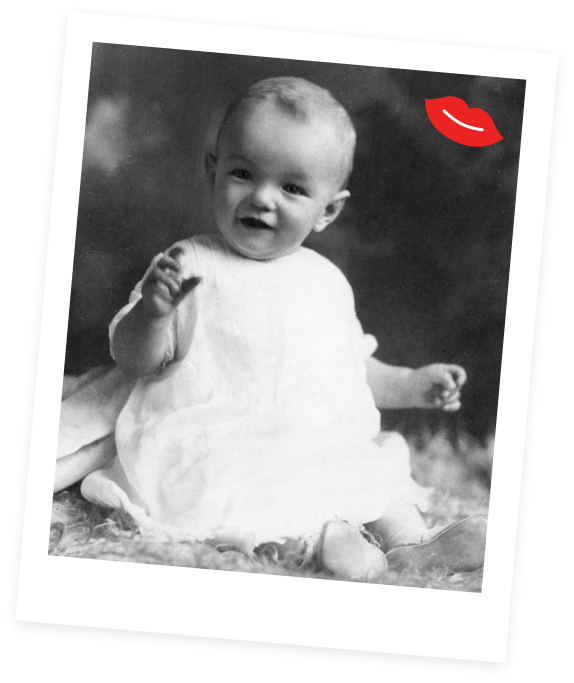
The true identity of Monroe’s father is largely unknown outside of speculation. Gladys was married previously to the birth of her final daughter, to a man nine years her senior named John Baker. However, after the birth of her first two children, she managed to file for divorce and sole custody, due to his violent temper and abusive nature.
Soon after the split, Baker actually kidnapped their son and daughter, moving with them to Kentucky. Monroe did not learn about her siblings until later, when sadly her brother had already passed away, but she did meet her sister as an adult.
While we remain unsure of the identity of her father, Monroe’s mother Gladys was working at RKO Pictures as a film negative cutter when she fell pregnant.
Gladys Baker worked at

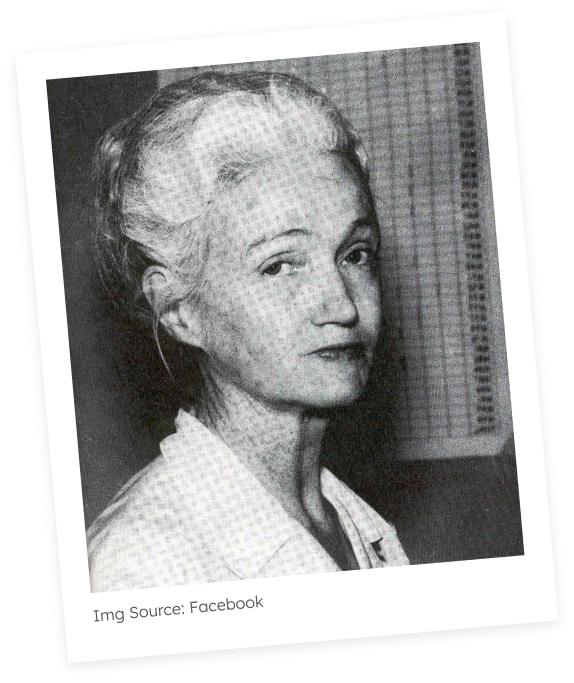
Many believe that her superior, Charles Gifford, was the father. Nonetheless, Gladys did register Monroe with the surname “Mortenson” after her brief second marriage, and specified the father’s address as unknown.
For her baptism, however, Gladys gave the surname Baker, after her first ex-husband. It is speculated that this was to cover up the baby’s illegitimacy. And indeed, until her pseudonym was used exclusively, the young woman would go by Baker as her last name.
Early Childhood
Sources attest that Monroe’s childhood was a happy one, for the most part.
Though her mother struggled financially to support the small family, placing Monroe with Christian foster parents in a rural town as a baby, she continued to visit and be a part of her daughter’s life.
When Monroe was aged seven, Gladys purchased a small home in Hollywood and moved there with her daughter and some lodgers.

Gladys purchased a small home in Hollywood.

However, less than a year later, Gladys suffered a breakdown and, after being diagnosed with mental illness, she spent time in a rest home before being transferred to a state hospital. Unfortunately, this marked the end of a consistent relationship with her daughter.
Monroe, now a ward of the state, proceeded to have a difficult few years. Her living situation changed often, and she endured sexual assault at the hands of the lodgers in her mother’s house, before even her tenth birthday.

As is common in children who suffer great harm at an early age, she withdrew into herself and developed a stutter.
After bouncing around different foster homes and staying at an orphanage, her mother’s long-time friend Grace Goddard finally became Monroe’s legal guardian. Though her life did not get much easier from here—while she technically had someone to care for her, this home life was not ideal either.
Grace Goddard became Monroe’s legal guardian.
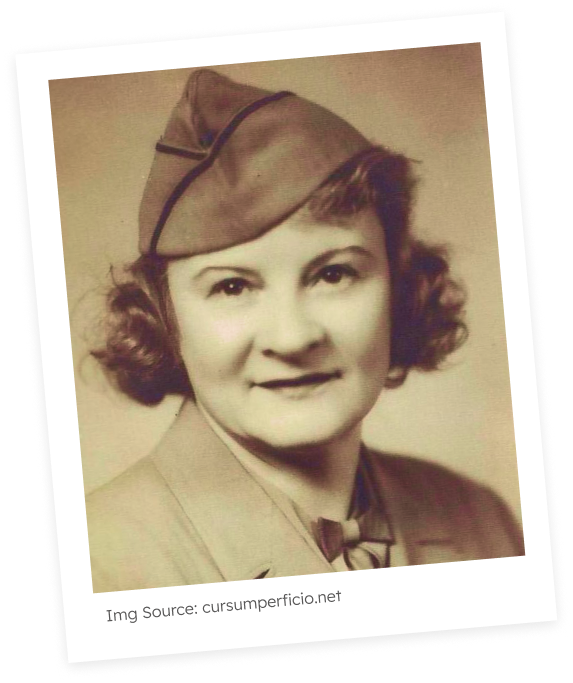
The Goddard family was very religious and employed strict fundamental guidelines. Many activities that are normal for young people were disallowed, including going out to the movies. And on top of her limited freedoms, young Monroe continued to suffer further assaults in her guardian’s home. After this living arrangement ended, Monroe moved between the homes of relatives and family friends.
Stability, but Not for Long
Finally, Monroe was able to settle into a more nurturing and permanent home in 1938, when she moved into the home of her guardian’s aunt, Ana Lower. Here, at the age of 12, Norma when to junior high school and attended church services.
She excelled in writing and was a regular contributor to the school newspaper.
This sense of belonging was not to last, however—Monroe had to return to living with her guardian’s family, the Goddards, in early 1941, at the age of 14. This only lasted a year, as the Goddards had to relocate to West Virginia for the patriarch’s work, and child protection laws in California forbade taking Monroe out of the state. Instead of returning to the orphanage, Monroe created her own solution.

First Marriage
To avoid a return to the Los Angeles Orphans Home, Monroe took matters into her own hands. On June 19, 1942, she married the neighbor’s son just after her 16th birthday. Her new husband, James Dougherty, was a 21-year-old factory worker, who supported his new relationship while Monroe dropped out of high school and worked as a housewife.
Monroe marries James Dougherty on June 19, 1942.
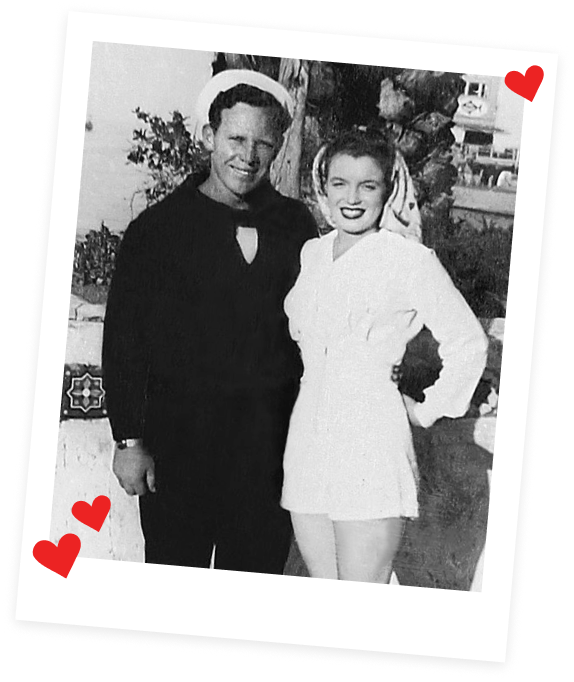
However, this was not to last—Monroe recounted how badly matched she and her husband were, especially because the marriage was mainly born out of a desperate situation.
She remained Dougherty’s wife when he enlisted in the Merchant Marine in 1943, as the United States moved into the Second World War, and when he was stationed on Santa Catalina Island, she moved with him.
Dougherty enlisted in the Merchant Marine in 1943.


She moved into Santa Catalina Island with him.
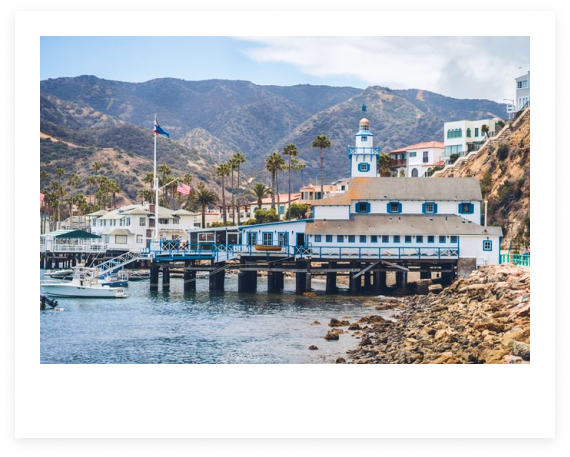
Dougherty was shipped out to the Pacific theater during the next year, where he would remain in combat for the majority of two years until the war was over. Monroe moved in with Dougherty’s family in the neighborhood of Van Nuys, Los Angeles, and took up a job at a defense factory, Radio Plane Munitions. This would prove to be a turning point for her.
Marilyn at Radio Plane Munitions.
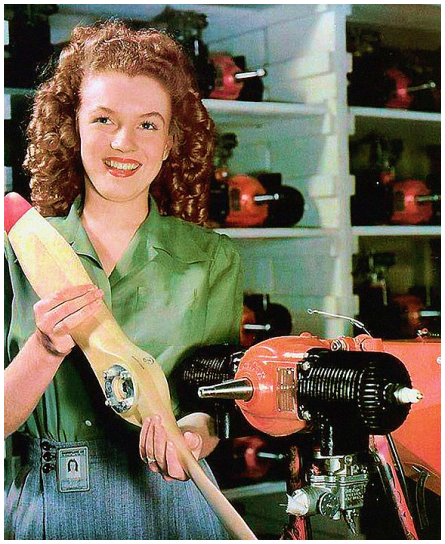
The First Inklings of Stardom
As fate would have it, the star of the silver screen that we know today would get her start in that very munition factory. But Monroe had dreams of becoming an actress long before then. Growing up in Los Angeles as movies embraced sound and other advancements wwere very influential, Monroe daydreamed about such escape while being stuck in abusive and toxic homes.
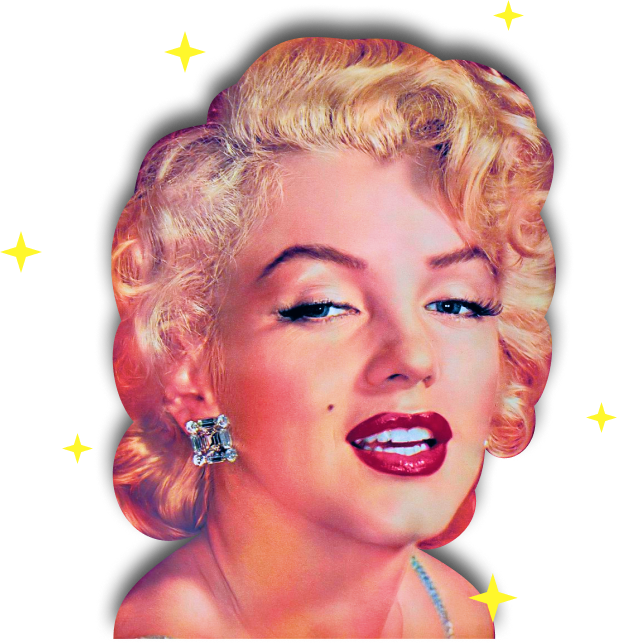
Said Monroe to Life reporter, Richard Meryman,
“I was five…when I started wanting to be an actress. I loved to play. I didn’t like the world around me because it was kind of grim, but I loved to play house. It was like you could make your own boundaries. It goes beyond house; you could make your own situations and you could pretend…when I heard that this was acting, I said that’s I want to be.”
She had dreams of becoming an actress beloved the world over, such as Bette Davis, Judy Garland, and others. While such big names received fame and the spotlight, appearing opposite other notable actors like Cary Grant and Clark Gable, Monroe supported the war effort in the Radio Plane Company’s munitions factory. But this is where her life would change suddenly and irreversibly.
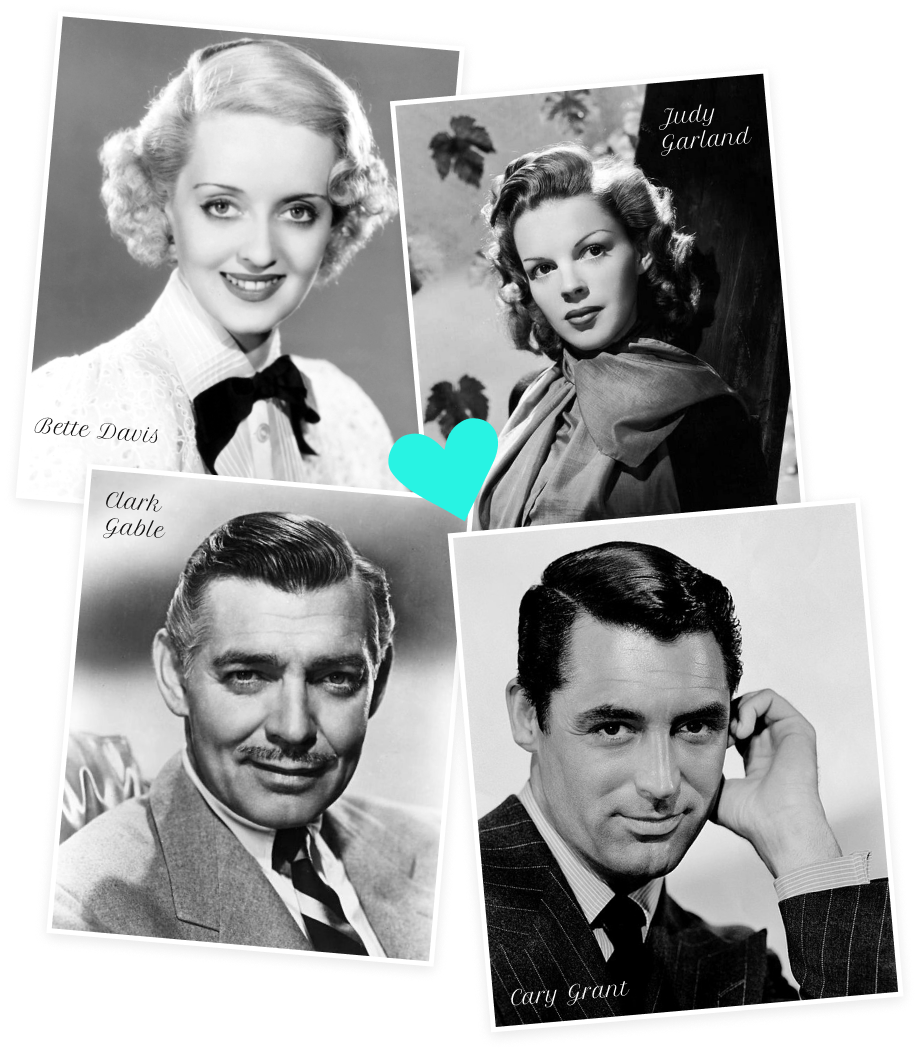

A Career Takes Flight
Beginning in 1944, Monroe worked at the local Burbank defense plant, on the assembly line. And only a few months into her job there, photographer David Conover visited the Radio Plane Munitions plant to shoot pictures of the war effort for Yank magazine. His primary purpose was to document women on the home front and what they were contributing, and luckily, he spotted Monroe that day.
David Conover was shooting pictures for Yank Magazine.
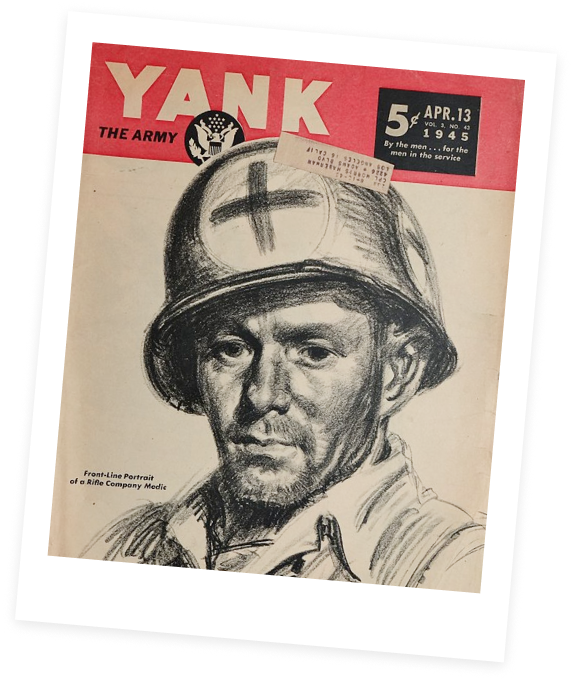
Discovery at the Factory
In her own type of wartime Cinderella story, Monroe caught the eye of Conover right away. He would describe her later as “the photographer’s dream girl”. Although the U.S. Army Air Forces First Motion Picture Unit that had sent Conover to capture the morale-boosting photos declined to use her pictures on the cover, Conover kept Monroe on his mind.
Following Monroe’s discovery, the photographer continued to send modeling gigs her way.
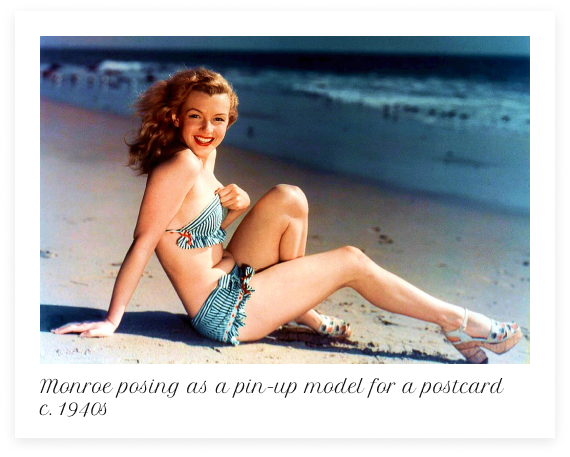

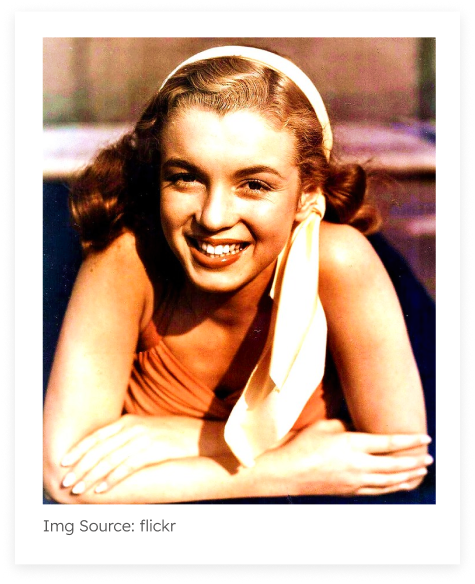
She posed for a variety of shoots with Conover and his colleagues in the photography industry, building her confidence and reputation.
And when Conover suggested that she had a future in modeling, Monroe ignored her husband’s insecurities about it and quit her job at the factory.
Modeling Career
Monroe took a three-month modeling course to learn the basics of the craft, before signing a contract with the Blue Book Model Agency in the fall of 1945. The agency personnel decided that Monroe’s figure was most suitable for pin-up shoots, rather than high fashion design modeling, and so she was featured primarily in men’s magazines and advertisements.
Monroe signed a contract with Blue Book Model Agency in1945.
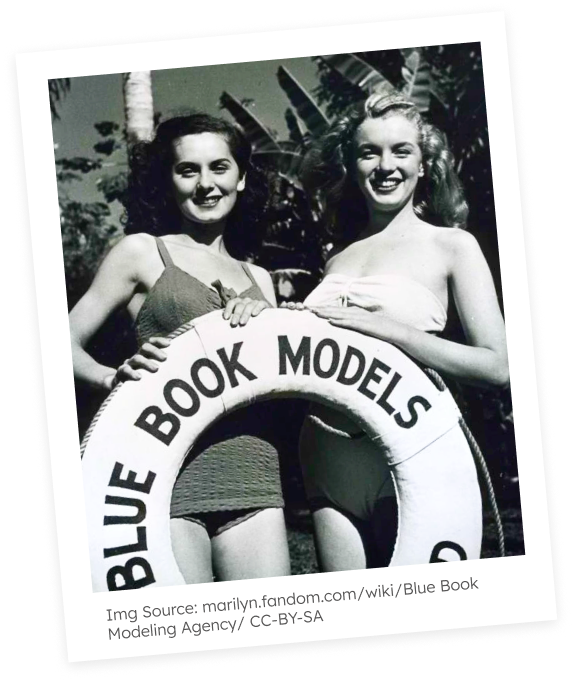
It was during this period that Monroe’s appearance began to change. She straightened her naturally wavy hair and began dying it blonde—though not the platinum tone that she would eventually become known for.
Additionally, she used the pseudonym Jean Norman for some of her gigs, a twist of her first and middle names.
She was easily one of the agency’s hardest working and most ambitious members. By the first months of 1946, she had already appeared on about 33 magazine covers for various titles across the country. These included Laff, Peek, and U.S. Camera.
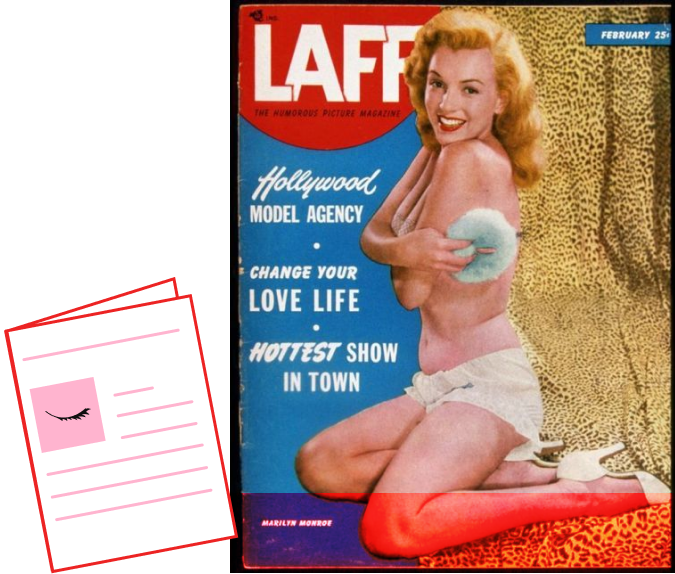
Monroe was officially working as a successful model, but her husband still was not content with her career choices.
First Steps into Film
By the time Dougherty returned from the war in 1946, Monroe was ready to move forward with her life, as a single woman and without her husband’s permission to continue modeling. Indeed, Monroe had her eye on a career on Hollywood’s silver screen. And after her divorce, while still riding the high of her modeling career, Monroe signed with an acting agency that year.
20th Century Fox
Though Monroe’s screen test was not the most enthusiastically received by the executives at 20th Century Fox, the head of the studio Darryl F. Zanuck decided to give her a standard six-month contract.
Another executive at 20th Century Fox, Ben Lyon, became close to Monroe and suggested “Marilyn” for her stage name. She chose Monroe after her grandmother’s surname.
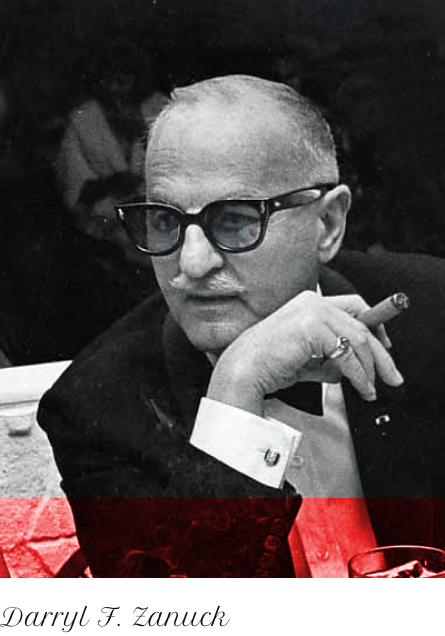
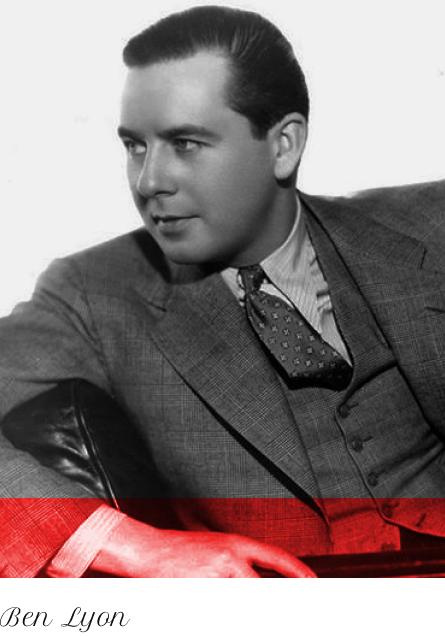
During her contract with 20th Century Fox, Monroe learned the ways of the screen and stage—singing, dancing, and acting. She also witnessed the film-making process to learn the ins and outs of the industry. Though she was not cast in any productions during her first tenure, Monroe renewed her contract in early 1947 and would receive her first casting then.
Monroe did not rise to stardom right out of the gate. Instead, she was given bit parts in two films, Dangerous Years in 1947, and Scudda Hoo! Scudda Hay! in 1948.
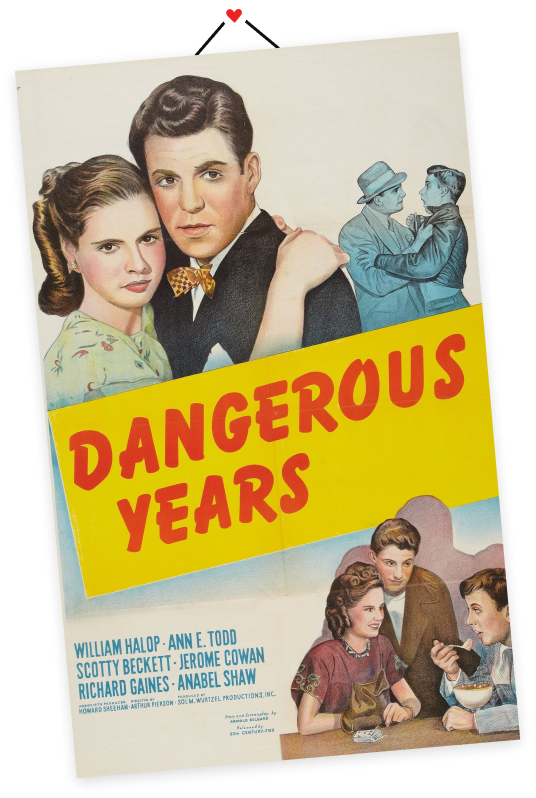
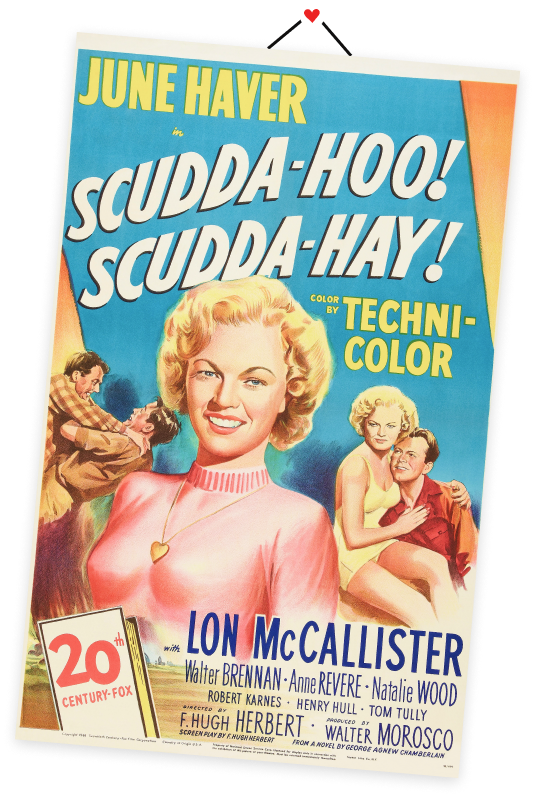
Producers considered Monroe too shy and reserved to have a real acting career, so despite her enthusiasm for the craft, the studio did not renew her contract when it lapsed in the fall of 1947.
Still determined to become an actress, Monroe returned to modeling. She also continued to work the odd film job at various studios—though most of these screen positions were behind the scenes or very limited. But Monroe also continued her training at the Actor’s Laboratory Theater, a Hollywood institution for acting techniques that people such as Howard Da Silva and Dorothy Dandridge frequented.
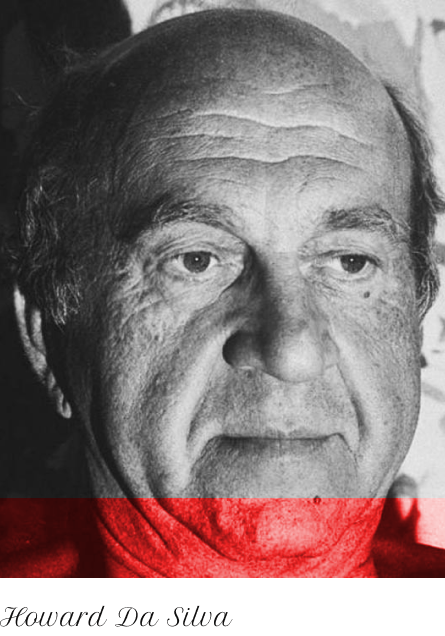
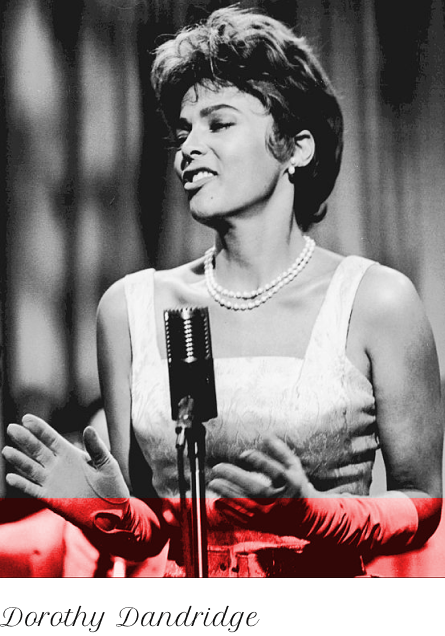
Columbia Pictures
Ever resourceful in her approach to accomplishing her goals, Monroe continued a process of networking and making influential friends in the movie industry. She attended director’s parties, befriended gossip columnists, and linked herself to producers and actors alike at studio functions. Soon, her acquaintance Joseph M. Schenck, a 20th Century Fox executive, mentioned her to his friend in the industry.
This friend of Schenck’s was no other than Harry Cohn, the head executive of Columbia Pictures, who signed Monroe onto his studio after some persuasion.
Joseph M. Schenck, an acquaintance of Monroe.
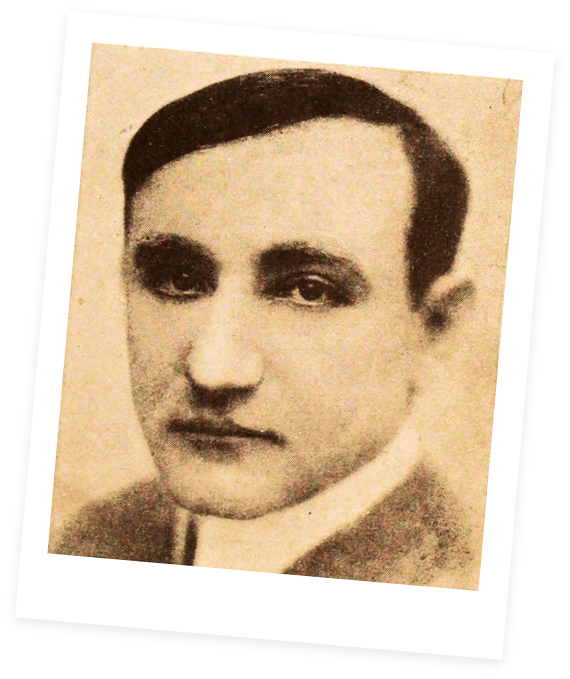
Harry Cohn signed Monroe onto Columbia Pictures.
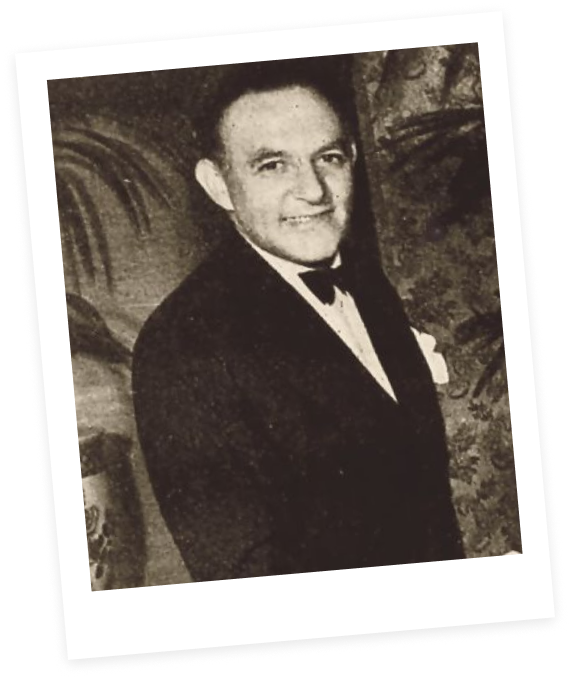
Once she arrived at Columbia, Monroe’s appearance was changed further, as her look became modeled after the famous Rita Hayworth and Monroe’s hair was bleached platinum blonde.
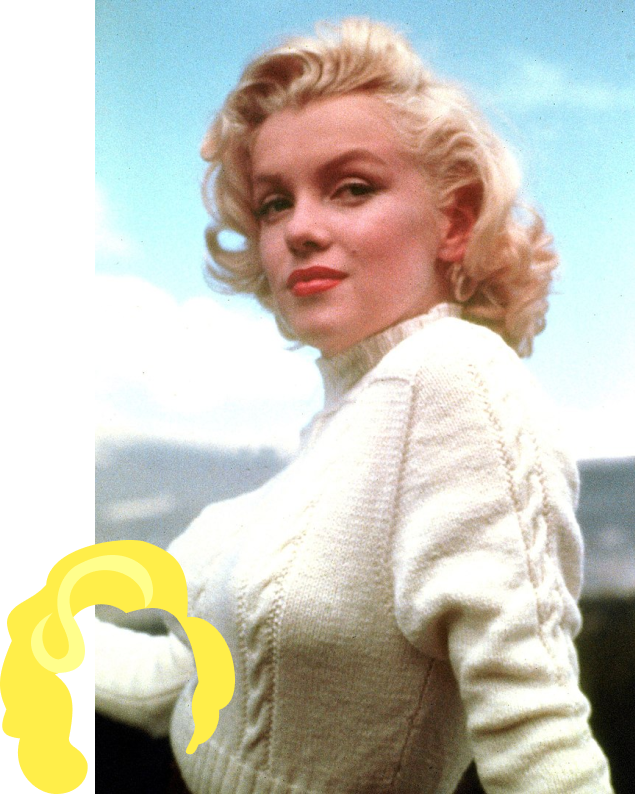
Though Columbia Pictures was arguably where Monroe got her fresh start on the screen, she was not entirely successful at this studio, either. She did land her first starring role in a low-budget musical called Ladies of the Chorus in 1948, where she played a chorus girl courted by a millionaire. She was also screen-tested for the lead in Born Yesterday, released in 1950, but her contract was not renewed in 1948.
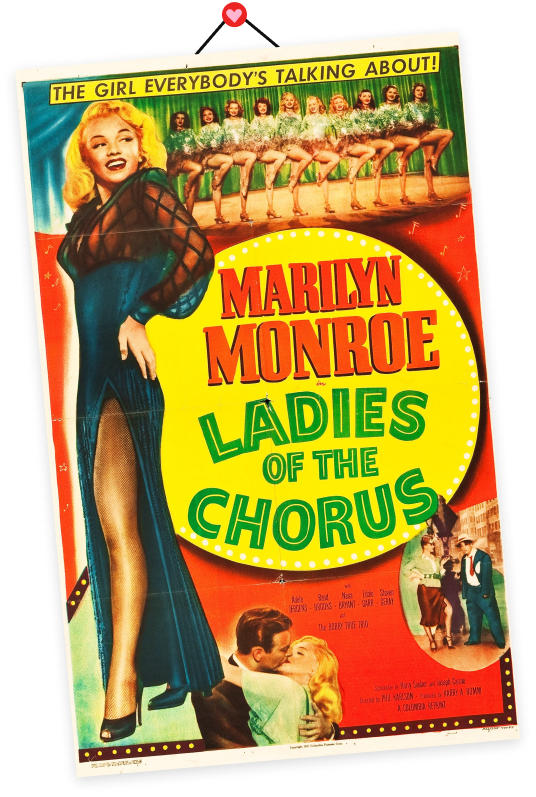
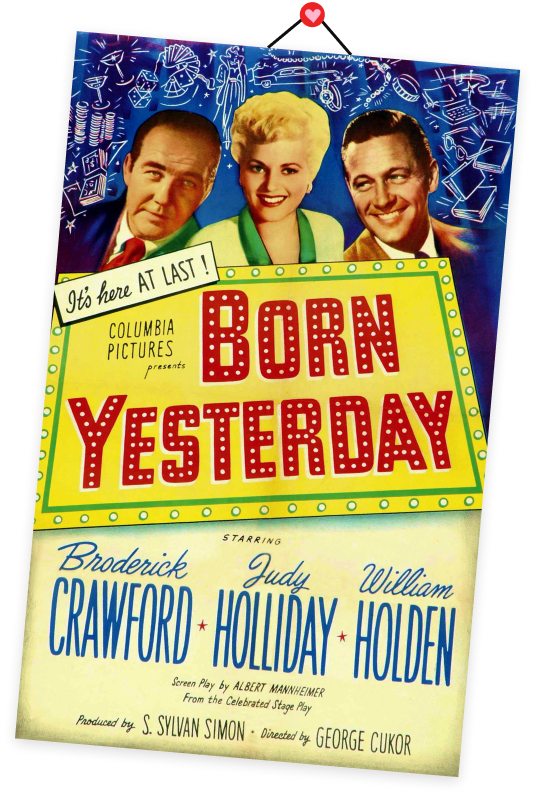
Back to Modelling
After her Columbia contract lapsed, Monroe returned to modeling. During this time, she shot some of her more ‘risqué’ material—posing for a Pabst beer commercial and an artistic nude photoshoot for John Baumgarth’s calendars, using the name Mona Monroe. Because of her earlier topless and bikini modeling experience, Monroe was comfortable with this style in front of cameras.
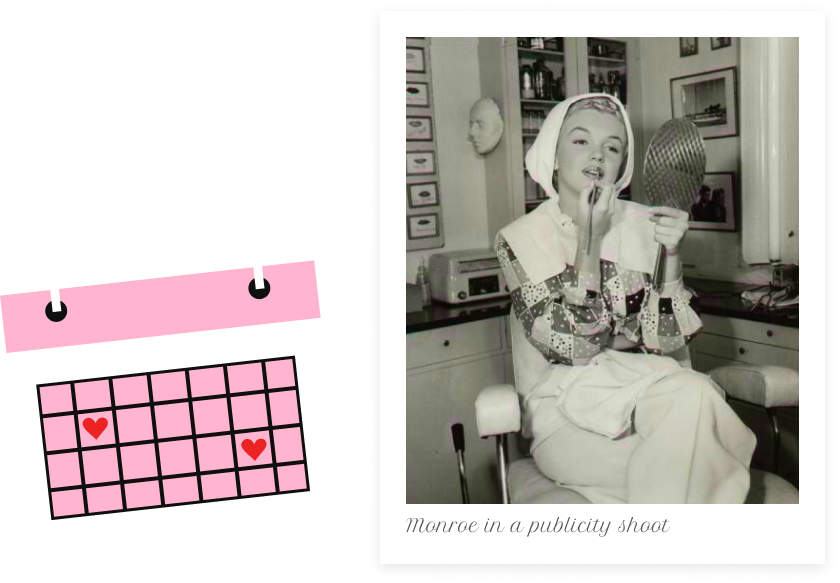
However, her need to return to modeling to make ends meet was soon to end. During 1949, Monroe met and befriended Johnny Hyde, vice president of the William Morris Talent Agency.
And it was through Hyde that Monroe found her first solid pathway into Hollywood stardom.

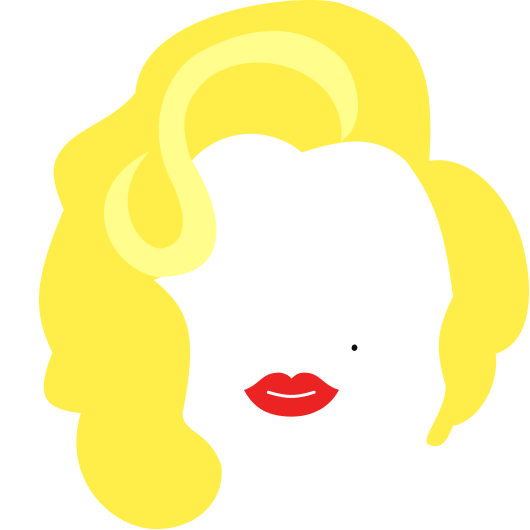
Marilyn Monroe’s Breakthrough
Thanks to Johnny Hyde’s connections, Monroe landed her first influential role on the screen:
As a gangster’s lady in The Asphalt Jungle, directed by John Huston
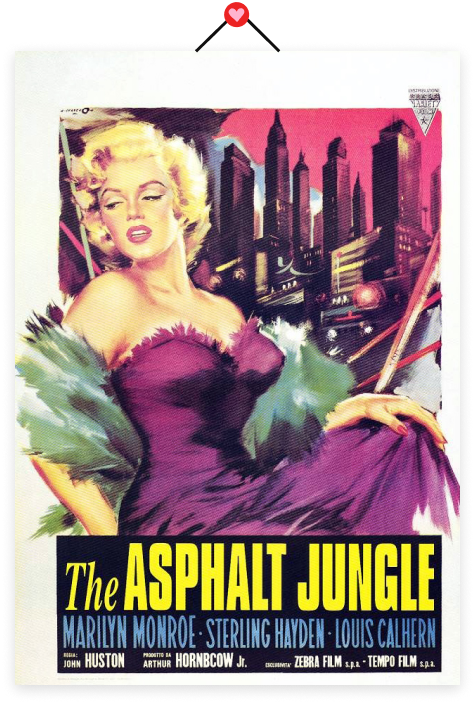
As Claudia Casswell in Joseph Mankiewicz’s All About Eve
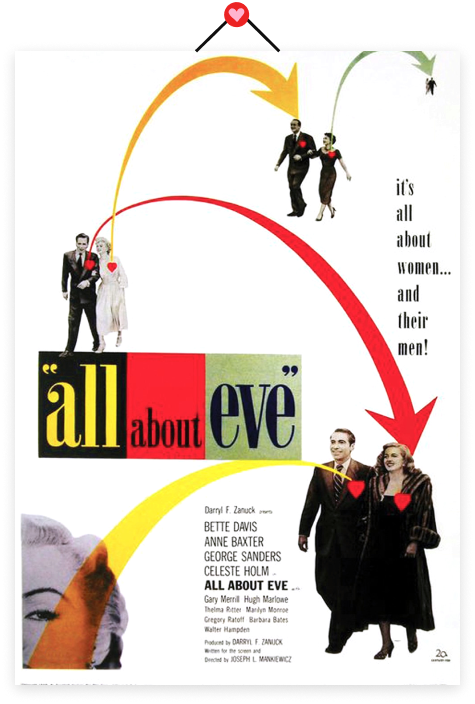
Both films were released in 1950, and Monroe gained critical acclaim even in her limited roles and screen time. The doors, it seemed, were opening for the young actress.
In December of 1950, Monroe signed a seven-year contract with 20th Century Fox, returning to the initial studio she had dreamed of. During the next year, she had successful supporting roles in comedies, including As Young as You Feel, Let’s Make it Legal, and Love Nest. However, she would later attest that each film cast her as sexually ornamental.
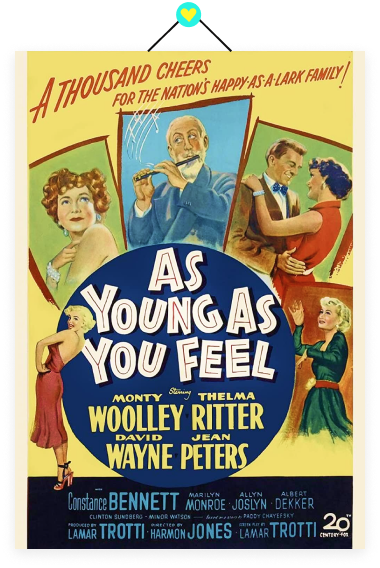
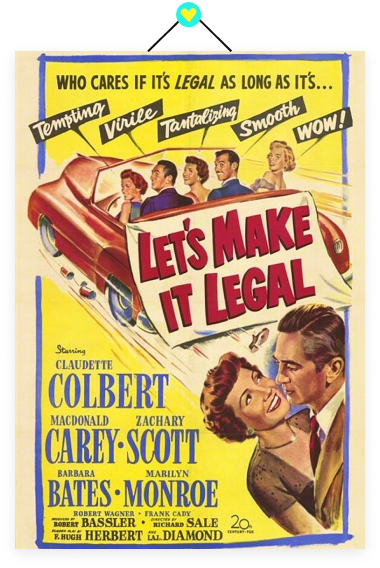
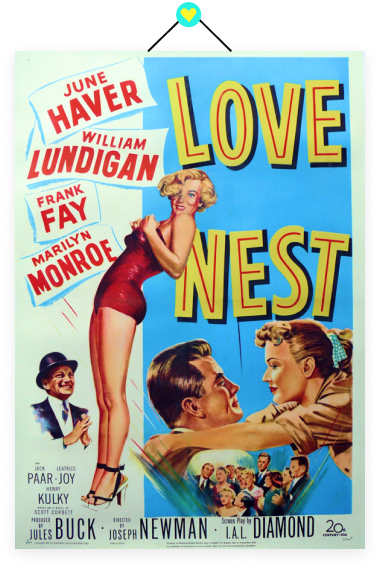
But this was indeed the beginning for Monroe—her audience popularity grew with each title, and magazines featured her frequently.
Fan mail arrived in the thousands, and in 1952, the Hollywood Foreign Press Association dubbed her “best young box office personality”.
Marilyn Monroe was well on her way to the top of the Hollywood totem pole.
The Iconic Blonde Bombshell
In 1953, Marilyn Monroe starred in three films that arguably became her most iconic role in the public’s perception: the blonde bombshell.
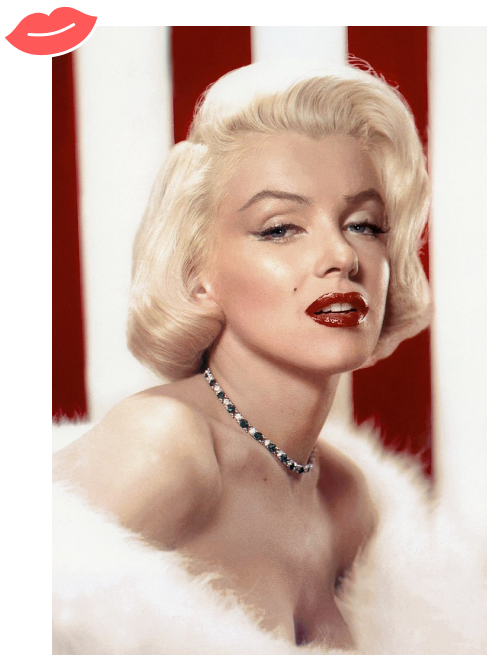
By this point, Monroe and her makeup artist, Allan Snyder, had achieved her “trademark” look. It included pale skin and platinum blonde hair, with dark eyebrows and deep red lipstick. Her beauty mark, a mole above the right side of her mouth, was also augmented with makeup.
Monroe rocketed to fame as the sultry-voiced, hourglass-figured sex symbol of Hollywood with the release of Niagara, Gentlemen Prefer Blondes, and How to Marry a Millionaire. In bright Technicolor, Monroe dazzled and sashayed her way into the hearts of audiences worldwide, where her iconic blonde hair, pink dresses, and pouty smile drew everyone’s attention.
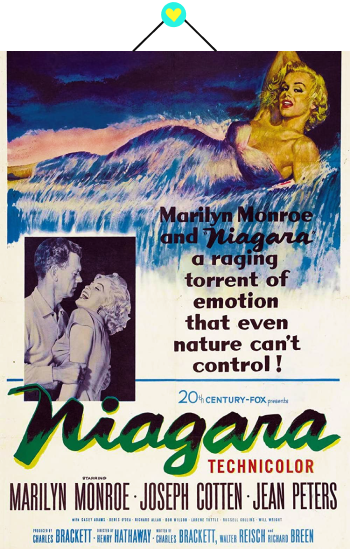
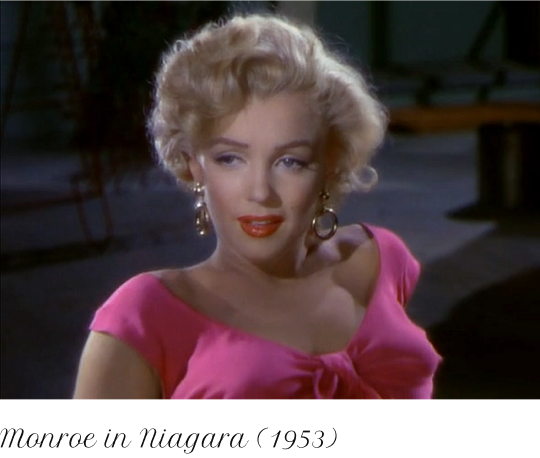
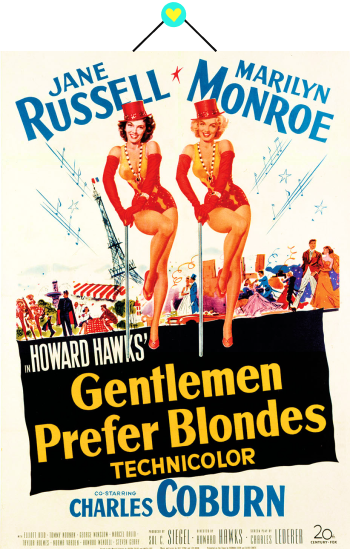
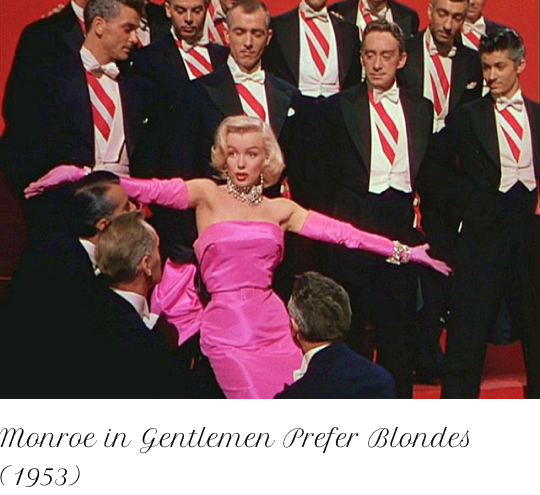
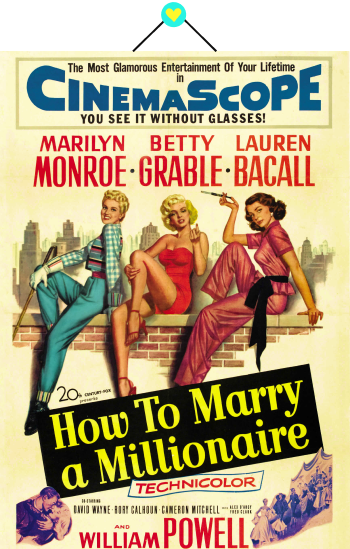
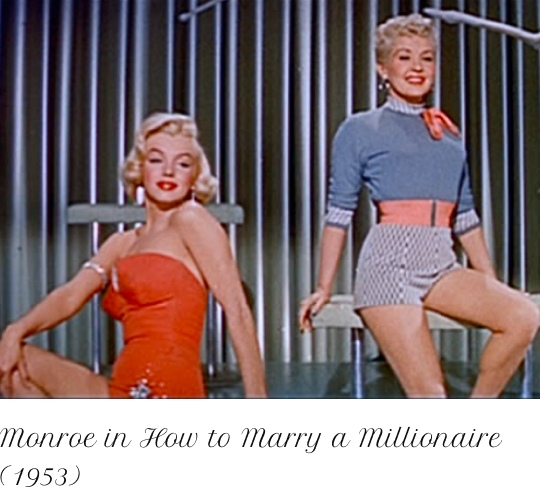
The second of these films firmly—and unfortunately—solidified her on-screen persona as a ditzy blonde, who occasionally played a gold-digger. And the audiences loved it: when How to Marry a Millionaire was released, it turned into Monroe’s biggest box office success thus far.
Second Marriage
Coming off the success of these three films, Monroe found herself in heated debates with Fox studios, when she refused to act in yet another musical comedy revolving around a dumb blonde, The Girl in Pink Tights. And it wasn’t long after this contention that she married baseball star Joe DiMaggio in 1954, and then participated in overseas USO shows for the troops in Korea, singing and entertaining soldiers.
Marilyn married baseball star Joe DiMaggio in 1954.
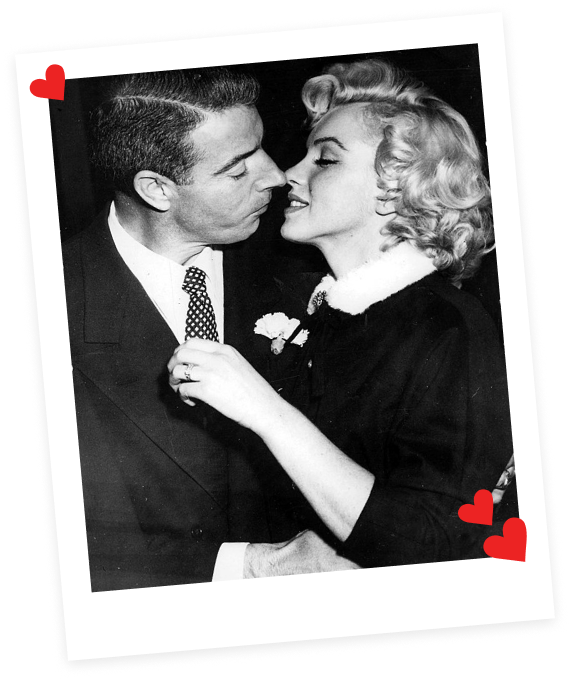
Once she returned to Hollywood, she settled with Fox studios and proceeded to film another iconic movie—The Seven Year Itch.
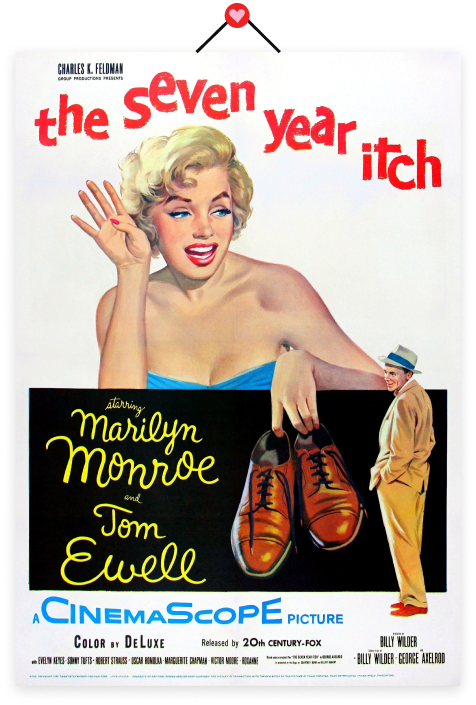
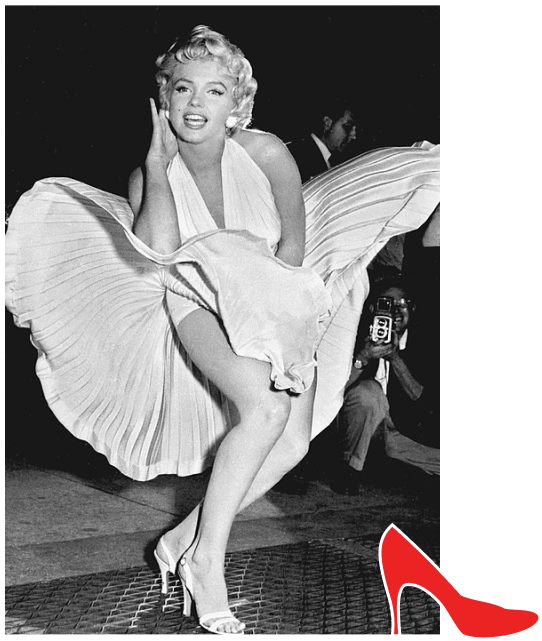
The publicity stills for this film remain some of her most popular images, including the famed subway grate shot, featuring Monroe in a white chiffon dress, posing as the breeze lifts her skirt. This publicity stunt also ended her marriage, as a controlling DiMaggio was infuriated by it.
After starring in There’s No Business Like Show Business, and River of No Return, Monroe moved to Manhattan in 1954 to take method acting classes at the eminent Actors Studio, run by Lee Strasberg.
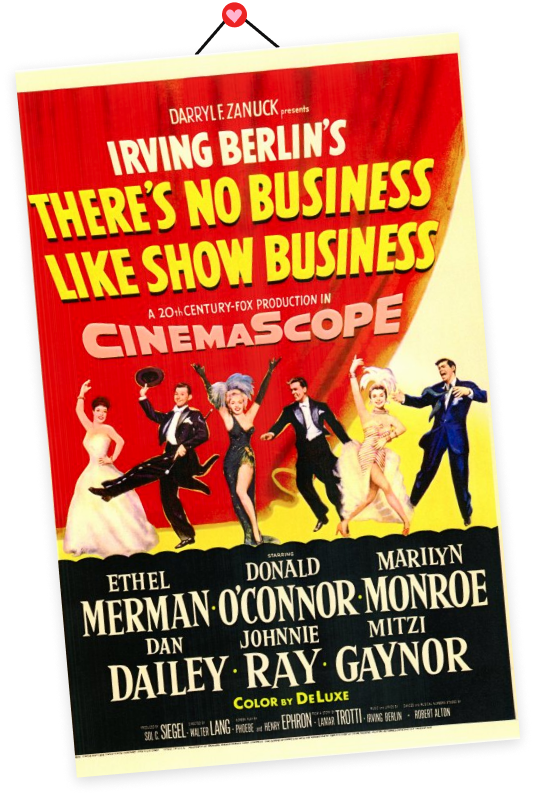
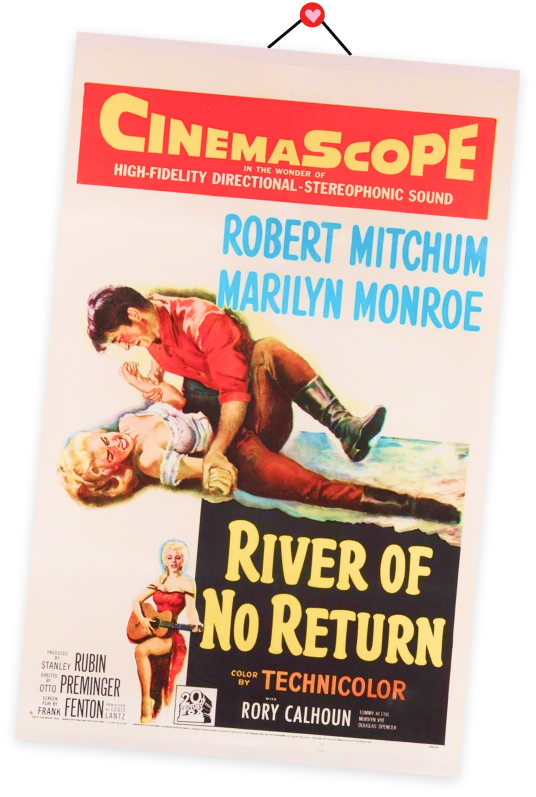
It was here that she met her eventual third husband, Arthur Miller, and signed a new seven-year contract with 20thCentury Fox that gave her more leeway in projects.
Marilyn married Arthur Miller.
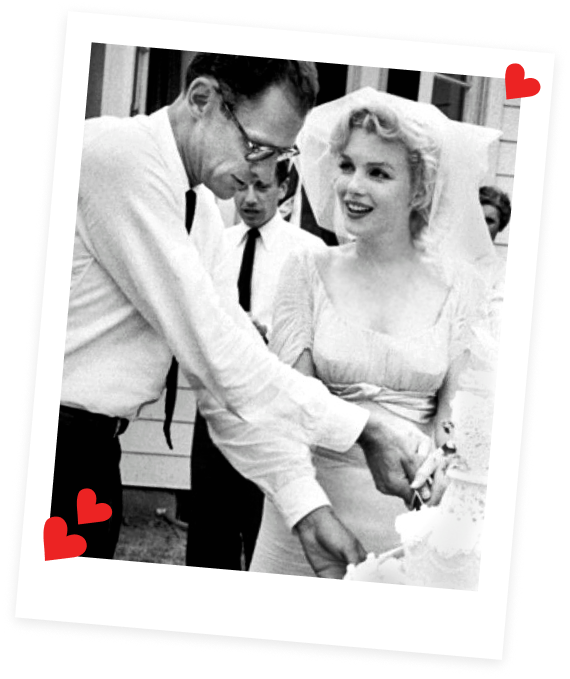
By the mid-1950s, Marilyn Monroe was established as one of Hollywood’s most bankable actresses, able to draw crowds of men and women alike. Audiences equally lusted after her and wished to emulate her.
And when Hugh Hefner featured her as the first Playboy centerfold, her status as a universal sex symbol was cemented.
However, though she was regarded as one of Hollywood’s shining stars, Monroe experienced many challenges with her fame. These troubles impacted both her professional and personal life, and would go on to cause nearly insurmountable problems for Monroe during the culmination of her career.
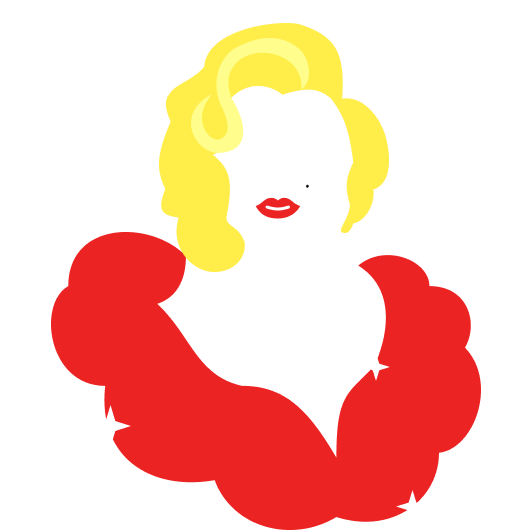
Troubles in Hollywood
It’s no surprise that Monroe’s Hollywood story isn’t a fairy tale, but it is worth a look into some of the specific challenges that Marilyn Monroe faced during her rise to stardom and during the waning days of her life and career.
Persona! The Problems with Screen Personality
Monroe always had a difficult relationship with the main studio that employed her—20th Century Fox. From her first screen test back in 1946, Monroe was never favored by Darryl F. Zanuck, the studio executive. As Monroe continued to work for the studio, she frequently clashed with Zanuck over casting cliches and her wish to branch out into different roles.
Though Monroe was able to test her dramatic acting abilities in films like Don’t Bother to Knock and Clash by Night in 1952, she was always returned to the role she agreed was a “sex symbol”: the attractive but naïve and gullible woman.
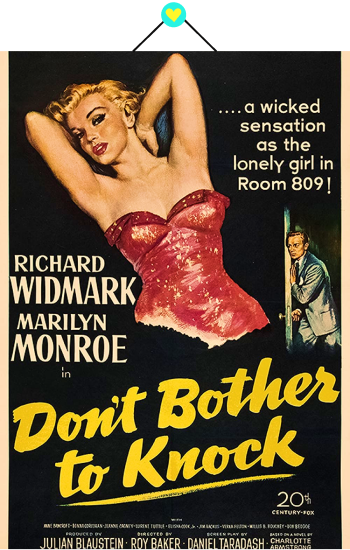
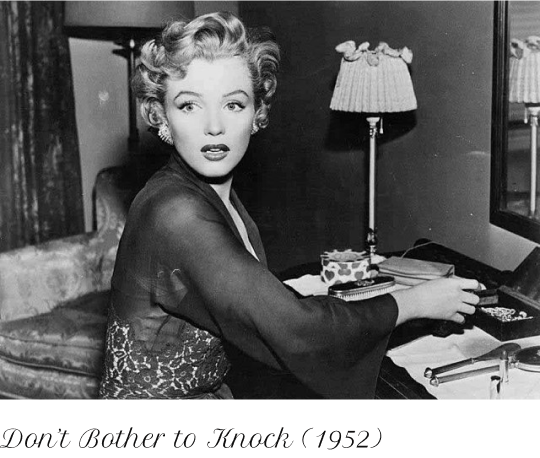
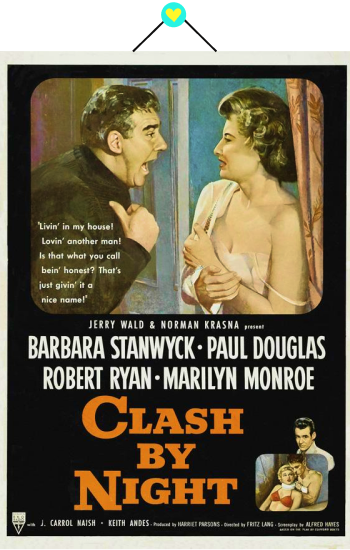
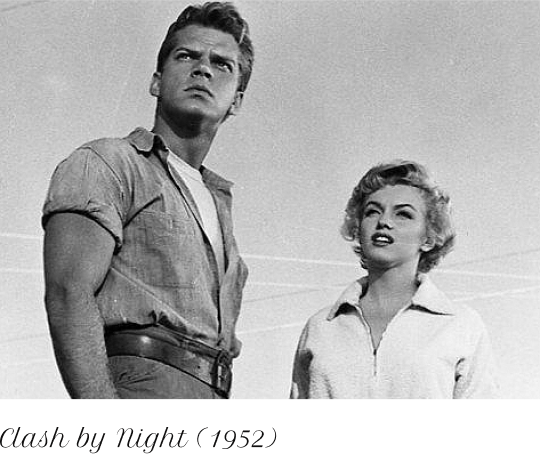
Speaking to Life magazine shortly before her death, Monroe said “that’s the trouble, a sex symbol becomes a thing. I just hate to be a thing.”
Such type-casting led to deep dissatisfaction with her on-screen persona. Before she delved into method acting classes in New York, Monroe genuinely disliked the niche that she had been forced into, based on her looks. However, the studio system had found a place for Monroe and she was essentially stuck there, faced with lawsuits if she did not comply with producers’ wishes.
This problematic screen persona was further cemented when the nude photos that she posed for at the end of the 1940s were leaked. After her rise to fame, these pictures were sold to publications and ignited the public’s intrigue.

20th Century Fox actually profited off these images, releasing three of her films during the height of the scandal.
Furthermore, in 1953 when Hugh Hefner was still just an aspiring publisher, he bought the rights to one of Monroe’s nude photos. He used it as the cover and the first-ever centerfold of his new magazine, Playboy. Monroe never gave her consent for this likeness to be used, and after publication, it was far too late—millions were already garnered from her photo.
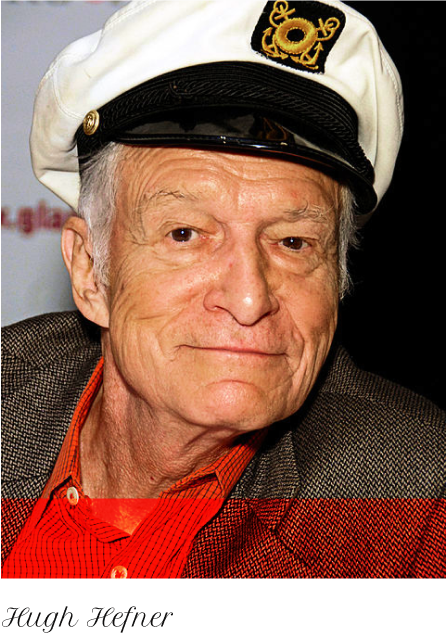
Img Source: Wiki Commons, By Toglenn – Own work, CC BY-SA 3.0

Ups and Downs in Her Personal Life
Not only did Monroe experience challenges in her professional life and on-screen, but her private life also tended to be open to the public. Throughout her second and third marriages, the public was deeply involved with her news, from affairs to miscarriages.
Close friends believed that she never got over her childhood trauma from the abuse she suffered, and many actually think her mental condition worsened due to the method acting classes she took at Manhattan’s Actors Studio.
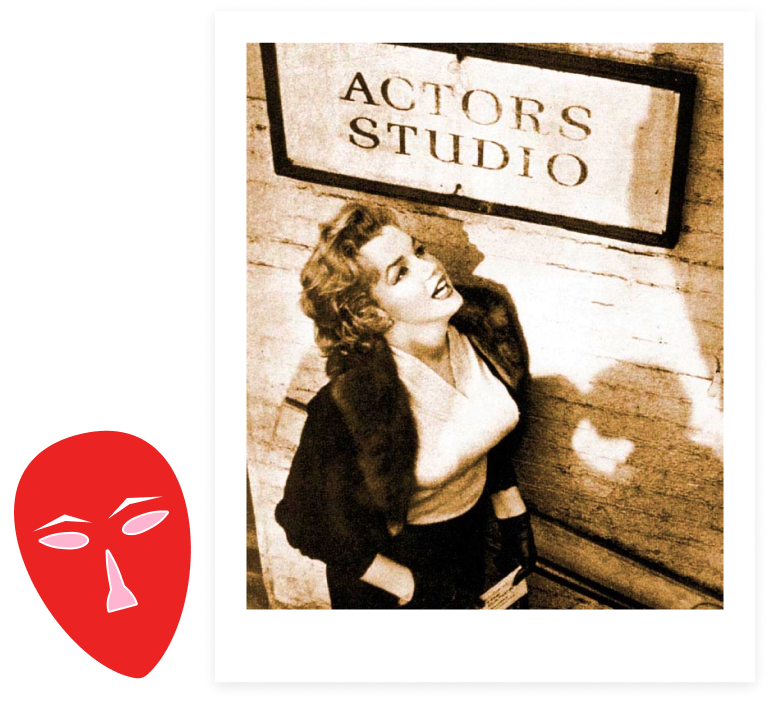
During these classes, Monroe was encouraged to undergo psychoanalysis, as her instructor believed that actors needed to confront their emotional trauma to use in performance. However, whether she was able to safely decompress such revisitation to trauma is unknown, and this could have had a damaging effect on her overall mental health.
And, like so many do, Monroe ended up turning to drug and alcohol use to help her cope. For the most part, she was able to handle these diversions, but after an ectopic pregnancy and miscarriage likely due to her struggles with endometriosis, Monroe was hospitalized for a barbiturate overdose in 1957.

The End of an Era
Many could see that Monroe was struggling by the end of the 1950s, but she continued to act. After starring in another comedy on gender roles, Some Like it Hot, Monroe was greeted with critical and commercial acclaim, earning her a Golden Globe for Best Actress. After a hiatus, Monroe returned to the screen in 1959’s Let’s Make Love, but she is said to have appeared unlike her former self.
Marilyn won a Golden Globe for Best Actress.
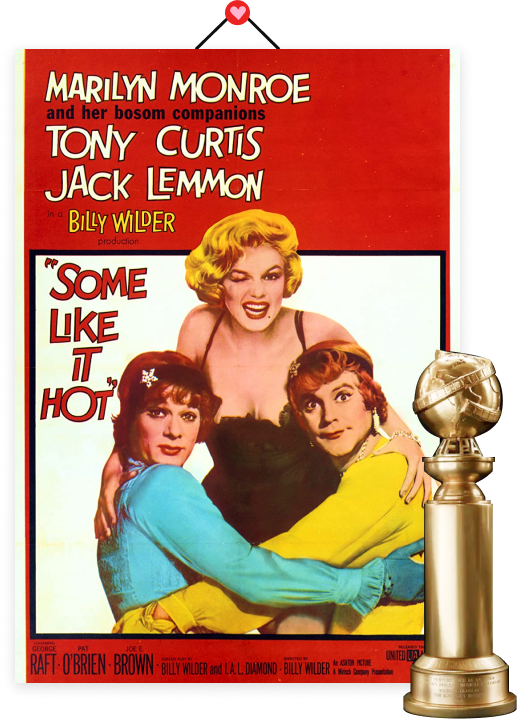
Monroe in 1959’s Let’s Make Love.
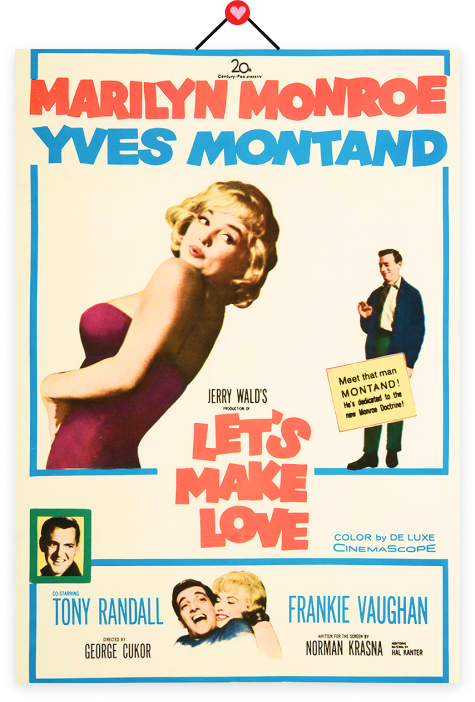
Around this time, Monroe’s health was beginning to fail, and friends would describe her appearance as unkempt. Secretly, her marriage to Miller was all but over, and her barbiturate habit was spiraling out of control. Monroe had to halt filming in 1960 to spend a week detoxing in a hospital.
Marilyn Monroe’s final film was 1960’s The Misfits, directed by John Huston—a fitting bookend, as her truly breakout role had been in his 1950 film The Asphalt Jungle.
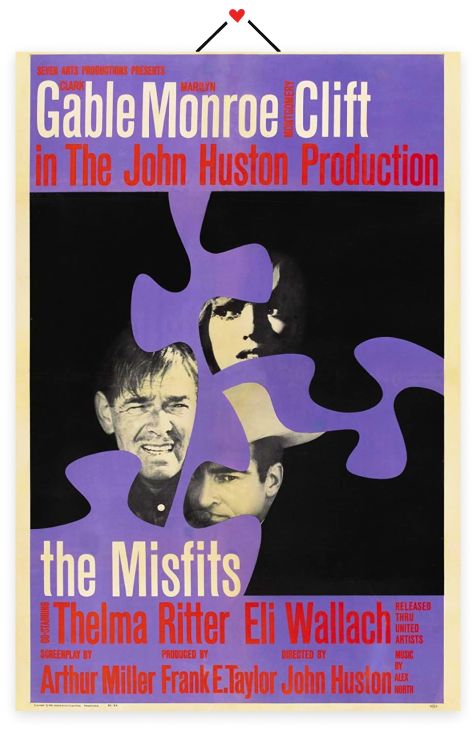
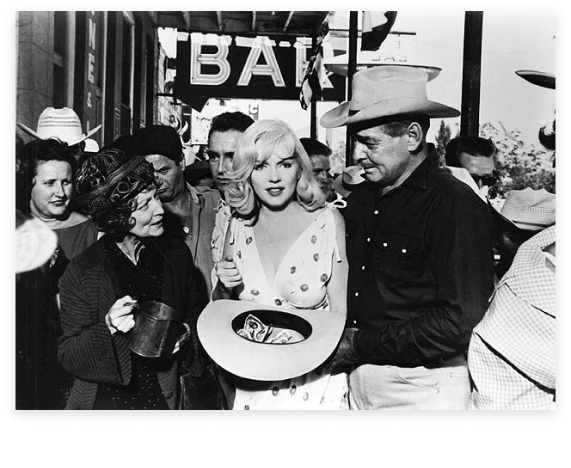
Throughout filming, though Monroe appeared to be struggling, she continued to amaze co-stars—including Clark Gable and Montgomery Clift—and directors, able to dig deep within and bring up raw and authentic emotions for her portrayal.
In 1962, Monroe returned to Hollywood after a variety of health complications and hospitalizations, ready to shoot Fox studio’s next picture, Something’s Gotta Give. After being diagnosed with acute sinusitis, though, the studio pressured Monroe to continue filming contrary to medical advice. Unsurprisingly, Monroe was unable to act for the majority of the production due to her illness.
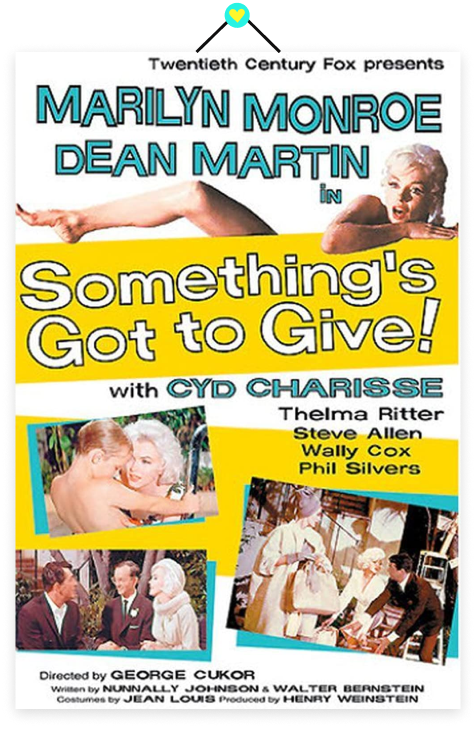
During this shoot, Monroe took a break to sing at President John F. Kennedy’s birthday celebration on May 19th, 1962. Her breathy rendition of “Happy Birthday, Mr. President” was an immediate success.
Audiences in Madison Square Garden went wild for her, and it remains one of her iconic—if not shortest—performances today.
However, when she returned to the set of Something’s Gotta Give, Fox studios was less than pleased with the added stoppage time her trip caused.
Monroe on the set of Something’s Got to Give.
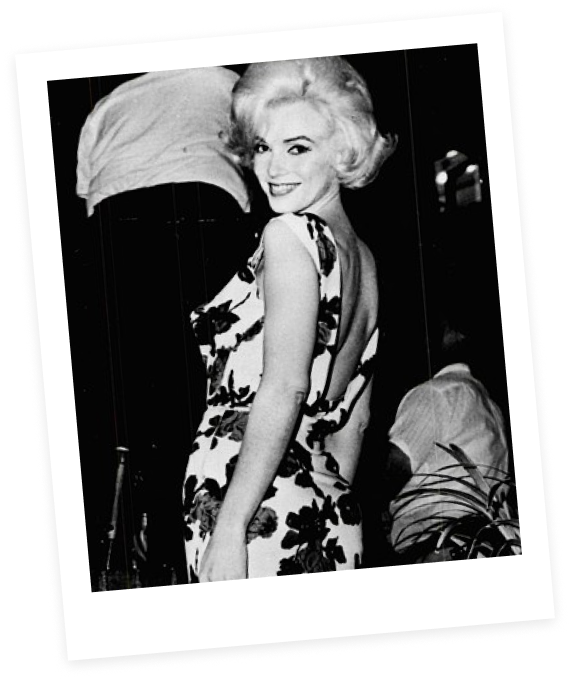
And when she once again was put on sick leave due to her inflammatory sinusitis, it was Fox’s final straw. The studio fired Monroe from her contract on June 7, 1962, and shut down the film’s production.
A Final Farewell
It’s a testament to Monroe’s acting ability and star power that Fox soon regretted this decision, and they began to negotiate her reinstatement. But this would come as too little, too late. In the early morning hours of August 5, 1962, Monroe was found unresponsive in her bedroom at 12305 Fifth Helena Drive, Los Angeles. She was pronounced dead around 3:50 a.m., the police arriving soon after.
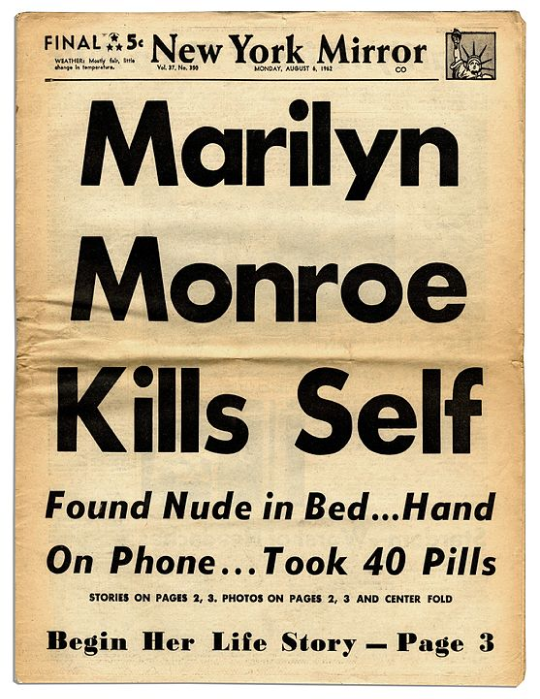
Marilyn Monroe had been found with a lethal dose of barbiturates in her system, and the world lost one of its brightest stars at the age of only thirty-six years old.
Though conspiracy theories popped up almost immediately, from murder to accident, Monroe’s overdose was headlined around the world. On August 8, she was laid to rest in a private service, in Crypt No. 24 at the Westwood Memorial Park Cemetery.
Monroe’s crypt located at Westwood Memorial Park Cemetry.
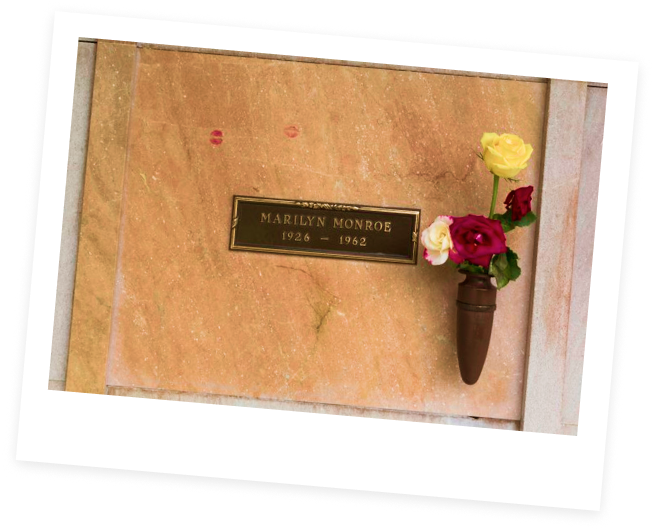
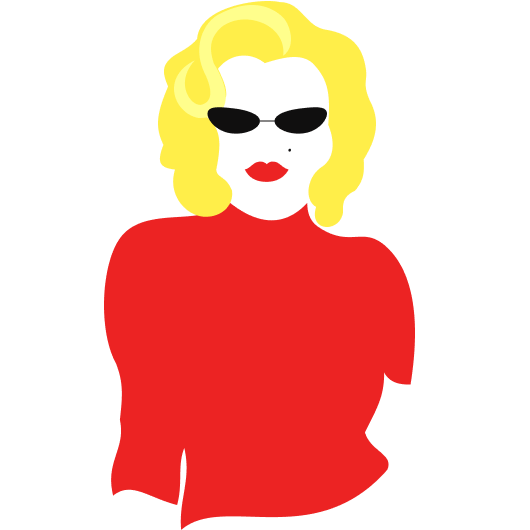
Marilyn Monroe’s Legacy
After her death, co-stars and colleagues alike came together to mourn Monroe, and to defend her from the often insensitive and predatory press. They attested to a legacy that would live on well after she had passed, and they were correct.
Today, Marilyn Monroe is one of the most famous Hollywood icons, and her films have maintained popularity since. And though Monroe continues to be a complex individual with a conflicted public image, she has been immortalized through the decades.
Hundreds of authors have explored her life; films and plays have tried to unravel her enigmatic self; artists in paint and music alike have drawn inspiration from the actress. The legacy of Marilyn Monroe has no end in sight, continuing to capture our hearts and charm audiences even now.
The Life and Career of Marilyn Monroe
Though Marilyn Monroe’s life and career was a tumultuous affair at times, most can agree that few celebrities can come close to the lasting impact that Monroe has had on the film industry and the world. From pop culture to modern media, Monroe continues to be relevant.
She is still a cultural icon today—both as an actress and as a human being who was able to overcome a difficult childhood, only to experience firsthand the difficulties of fame.
However, Monroe remains a shining example of dedication to her craft and the art of moviemaking.
- When was Marilyn Monroe Born?
- How was Marilyn Monroe’s Childhood
- When did Marilyn Monroe first get married?
- Where did Marilyn Monroe work before becoming famous?
- How did Marilyn become a model?
- When did Marilyn get hired to be an actress?
- What were Marilyn Monroe’s first Movies?
- Who did Marilyn marry in her second marriage?
- Why did Marilyn Monroe disagree with her roles in acting?
- What challenges did Marilyn face with her acting career?
- How did Marilyn Monroe die?
- How has Marilyn continued to heavily influence the world today?
- Excellent Quality Home Theater Seats
- 3 Seater Home Theatre Recliner
- Theater Seating All Leather
- Modern Entertainment Furniture
- Best Made Theater Seats
- 4 Seat Sectional Couch
- Media Furniture
- Dual Leather Theater Reclining Furniture
- Leather Sectional With Lights
- Fabric Home Theater Seats
- Real Leather Sectionals For Sale
- Luxury Chairs For Sale
- Double Seater Chair
- Tv Media Furniture Modern
- Best Rated Theatre Couch
- Diamond Couch
- Bass Industries Home Theater Seating
- Black Leather Sofa Sets
- Platform
- Couch Battery Pack
- Heated Massaging Sofa
- Lane Theater Seating 2021
- Home Theater Seating Trays
- Brown Leather Sofa Sets
- Movie Theater Area Rugs
- Seating Risers For Sale
- Couches Massage And Heat
- Classic Seating
- Navy Blue Sofas
- Sectional Sofas Storage
- Most Amazing Couch
- Best Speaker Wire For Home Theater
- Media Room Loungers
- Fancy Leather Couch
- Individual Media Recliner
- Large Loveseats
- 4K Vs 8K Tv
- Microfiber Loveseat
- Contemporary Power Reclining Sofa
- Masculine Furniture
- Recliner Leather Sectional
- 3 Seat Recliner Sofa
- Over Sized Couches
- 3 Pc Recliner Sectional
- Microfiber Cinema Seating

